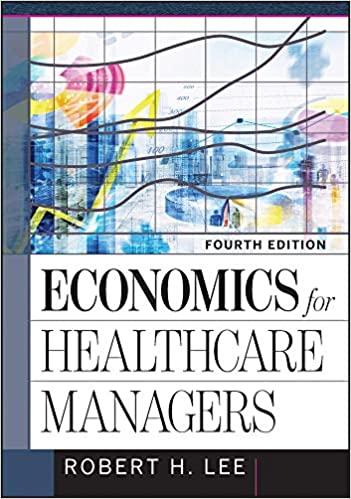Johnson County and Wyandotte County are adjacent counties in the Kansas City metropolitan area. Despite significant progress
Question:
Johnson County and Wyandotte County are adjacent counties in the Kansas City metropolitan area. Despite significant progress in recent years, the rate of premature death in Wyandotte County is more than double the rate in Johnson County (University of Wisconsin Population Health Institute 2018). What causes such large differences? Causes might include weaknesses in the primary care system or differences in health behaviors. The consensus is that diet and activity are the most important behaviors, tobacco use is second, and alcohol use makes a much smaller contribution (Institute of Medicine and National Research Council 2015).
How do these two counties compare? Even though the University of Kansas Health System is based in Wyandotte County, the county has far fewer primary care physicians and dentists per resident than average. Johnson County has far more primary care physicians and dentists per resident than average. Residents of Wyandotte County are 37 percent more likely to be obese (37% vs. 27%), 72 percent more likely to be physically inactive (31% vs. 18%), and 92 percent more likely to smoke (23% vs. 12%) but 25 percent less likely to drink excessively (15% vs. 20%) (University of Wisconsin Population Health Institute 2018).
Before labeling these as lifestyle differences, note that the economic circumstances are different in the two counties. Median household income is 48 percent lower in Wyandotte County (reflecting lower earnings and a higher proportion of single-parent households). The share without health insurance is 183 percent higher, and the share with a high school diploma is 19 percent lower. In addition, 23 percent of Wyandotte residents are African American and 29 percent are Hispanic, making it a much more diverse county (US Census Bureau 2018).
The government of Wyandotte County has launched a number of projects to improve the health of its citizens since 2009 (Healthy Communities Wyandotte 2016). Its 20-20-20 Movement seeks 20 new miles of trails, 20 miles of bikeways, and 20 miles of sidewalks by 2020. The Tobacco Free Wyandotte Action Team seeks to enhance resources for quitting tobacco, preventing young people from starting to use tobacco, and protecting residents from secondhand smoke. The Food Systems Action Team has promoted urban agriculture, farmers’ markets, community gardens, school-based gardens, summer meals for students, and nutrition education. Wyandotte County has also actively encouraged residents to sign up for insurance.
Discussion Questions
• What are the main inputs to health mentioned in this case?
• Are there important inputs to health that the case does not mention?
• What health behaviors should get priority?
• Is there evidence that reducing smoking improves health?
• Is there evidence that reducing obesity improves health?
• Does income play any role in improving health?
• How important is health insurance in improving health?
• Wyandotte County has relatively few primary care physicians. Should the number of primary care physicians be a priority?
• Can you find any evidence that improving primary care improves health?
• What role, if any, should private foundations play in improving health?
• What role, if any, should state governments play in improving health?
• What role, if any, should the federal government play in improving health?
• Which of these questions are examples of positive economics? Normative economics?
Step by Step Answer:






